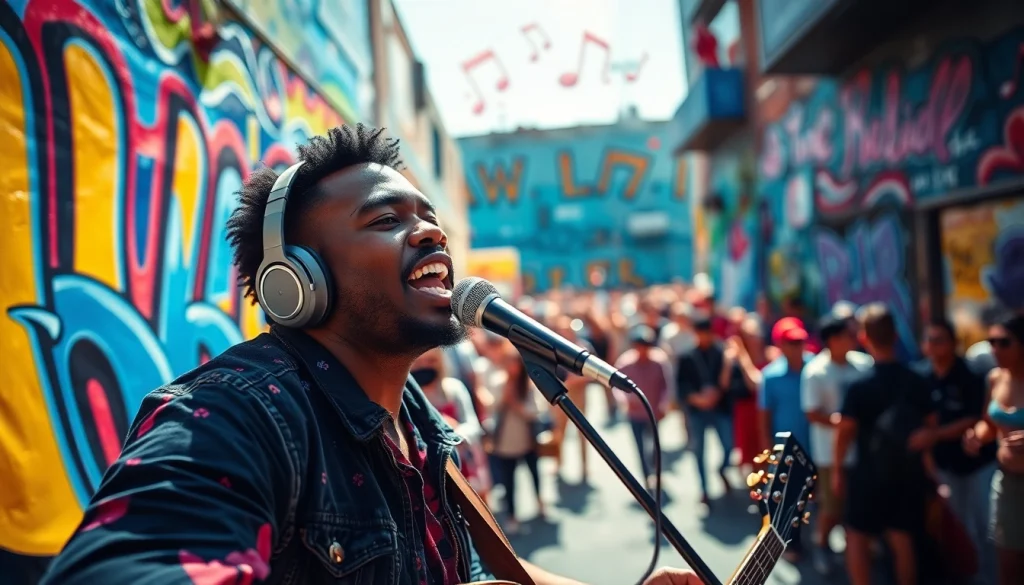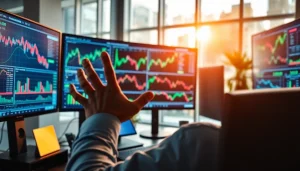Empowering the Independent Artist: Building a Unique Brand and Audience

Understanding the Independent Artist Landscape
The music industry is a vast and dynamic ecosystem where various players operate, from major record labels to independent artists. As an Independent Artist, you occupy a unique position that allows for creative freedom and flexibility; however, it also comes with its own set of challenges. Understanding this landscape is crucial to building a successful music career outside of traditional corporate structures.
Defining the Role of the Independent Artist
Independent artists are those who produce and distribute their music without direct involvement from major record labels. They often handle the entire process, from songwriting to marketing to distribution. This autonomy allows them to maintain creative control over their artistry, which is increasingly appealing in today’s era of personalized music consumption and direct-to-fan engagement.
Being an independent artist doesn’t mean going it alone. Collaboration is critical; many indie musicians partner with producers, sound engineers, and other artists to enhance their work. These collective efforts can help create a more polished final product while also expanding exposure through shared fan bases.
Current Trends in Independent Music
The independent music scene is continuously evolving, and certain trends are shaping its future. First, the rise of digital distribution platforms, like Spotify, Apple Music, and SoundCloud, enables artists to share their music with global audiences without incurring high costs. Independent artists can now distribute singles, albums, and even live performances through these platforms, significantly broadening their reach.
Moreover, the internet has allowed a more diverse range of genres and subcultures to flourish. Musicians can create niche markets based on unique sounds and styles, rewarding originality and personal expression over commercial viability. This democratization of music is a powerful tool that independent artists can leverage to stand out in a crowded marketplace.
The Importance of Authenticity in Art
In an age where consumers crave genuine connection, authenticity has become one of the most valuable currencies for independent artists. Building a real connection with fans fosters loyalty and increases the likelihood of support both emotionally and financially. This sincerity can manifest itself in various ways, from the music itself to the artist’s personal story and public persona.
Many successful independent artists openly share their journeys through social media. By transcending the typical artist-audience barrier, they create a community that feels invested in their success. This rapport translates to higher engagement rates, better concert attendance, and increased merchandise sales.
Building Your Brand as an Independent Artist
For independent artists, establishing a brand is not just optional; it’s essential. Your brand defines how audiences perceive you, making it crucial to create a distinctive identity that resonates with fans.
Creating a Distinctive Musical Identity
Crafting a distinctive musical identity begins with self-exploration and understanding your artistic influences. What sets you apart? What themes, sounds, and messages are integral to your art? An artist’s identity helps narrow the scope of their creativity while simultaneously allowing room for growth and experimentation.
Additionally, artwork, logos, and visual content are important in reinforcing your musical identity. Consider how your visuals align with the themes of your music. A cohesive aesthetic enhances brand recognition and contributes to a memorable experience for fans.
Utilizing Social Media for Brand Growth
Social media is an invaluable tool for independent artists wishing to expand their brand presence. Platforms like Instagram, TikTok, and Twitter allow you to share behind-the-scenes content, engage with fans, and promote your music on a global scale.
It’s important to choose the platforms that best suit your audience demographics and music style. Engaging content like live performances, Q&A sessions, and personal stories can create deeper connections. Regular interaction not only keeps current fans engaged but also attracts new listeners.
Engaging with Your Audience Effectively
Effective audience engagement goes beyond merely sharing your music. Regular interaction on social media takes the form of comments, direct messages, and live streaming opportunities. Using polls, questions, or contests can also encourage fan participation, fostering a sense of community around your music.
Listening to fan feedback and adapting to their preferences is equally important. This ongoing dialogue not only enhances your current offerings but can also guide future projects—whether it’s new music, merchandise, or tour venues.
Strategies for Marketing Your Music
As an independent artist, effective marketing strategies are essential for gaining visibility and building a fanbase. Unlike major label artists, you’ll have to be resourceful and creative in your approach.
Leveraging Digital Platforms for Exposure
Digital platforms serve as today’s primary means of music discovery. Utilizing services such as Bandcamp, DistroKid, and CD Baby for distribution ensures your music is available on various streaming services. Setting up your own website also provides a central hub for fans to learn about your music and keep up with your latest releases.
Consider creating music videos, lyric videos, or even visualizers for platforms like YouTube. These not only enhance your artistic presence but also provide additional content that can be shared across social channels.
Collaborating with Other Independent Artists
One fantastic way to gain exposure is through collaboration with fellow independent artists. This can range from co-writing songs to joint tours or featured tracks. By working together, artists can pool their resources and reach new audiences, multiplying their exposure effectively.
Collabs can also spark creativity; artists often find that participating in projects with others inspires new sounds, concepts, and aspirations that can enhance their original artistry.
Implementing SEO Best Practices for Musicians
Search Engine Optimization (SEO) is critical for independent artists looking to increase their online visibility. Optimizing your website’s content with keywords related to your music can boost search rankings, helping potential fans discover your work.
Focus on creating high-quality content—like blogs about your musical journey, album releases, or even industry insights. This not only helps with visibility but serves to position you as a knowledgeable figure within the music community.
Monetization Strategies for Independent Artists
Independent artists possess the advantage of generating diverse revenue streams. It’s vital to explore multiple avenues beyond just music streaming to establish a sustainable career.
Diverse Revenue Streams Beyond Streaming
While streaming revenue can be minimal, independent artists can monetize their art in various ways. These may include selling digital downloads, vinyl, or CDs through platforms like Bandcamp. Offering exclusive content, such as acoustic versions or bonus tracks, can incentivize purchases.
Consider diversifying your repertoire further by incorporating production work, songwriting for other artists, or even scoring for film and television. These additional gigs can significantly bolster income without detracting from your primary music career.
Utilizing Crowdfunding and Fan Support
Crowdfunding platforms like Kickstarter or Patreon enable independent artists to directly involve their fans in financing their projects. Offering exclusive rewards—like behind-the-scenes access, personalized songs, or merchandise—can motivate fan support and build a sense of ownership over your work.
This direct funding approach not only helps finance your projects but also solidifies fan connections. It sends a clear message: your supporters’ input and contributions are valued.
Merchandising and Live Performances
Merchandising provides an excellent revenue stream for independent artists. From clothing to accessories and even physical music formats, offering merchandise can reinforce your brand while generating income. Be creative with your designs—fans appreciate unique and artistic merchandise that reflects their support for you.
Live performances—though sometimes challenging to organize—are another significant source of income. Developing a dynamic live show can enhance your reputation and generate revenue through ticket sales. Begin with local gigs and scale your performances as your following grows.
Measuring Success and Growth as an Independent Artist
Establishing specific success metrics is crucial to tracking your journey as an independent artist. Success can be quantified in various ways, but setting benchmarks can help monitor progress while adapting to the changing music landscape.
Key Metrics to Track in Your Career
Key performance indicators (KPIs) should serve as a foundation for your strategies. These could include social media engagement rates, streaming numbers, merchandise sales, and concert attendance. Regularly reviewing these metrics can reveal trends, helping you adapt strategies and offerings.
Listening to feedback from fans and collaborators is equally important in evaluating your growth. Measuring success extends beyond numbers; it involves understanding your impact within the community, as well.
Adapting to Industry Changes and Feedback
The music industry is continually evolving, and the independent sector is no exception. Be prepared to adapt your tactics as trends shift. This can mean altering your promotional strategies, embracing new technologies, or even experimenting with different musical styles.
Honest feedback is invaluable. Engage with your fans and peers to gain insights into how your work is received and perceived. Constructive criticism can pave the way for personal and professional growth.
Setting Future Goals and Milestones
As you move forward in your career, setting clear, actionable goals is vital. These goals can range from releasing an album to reaching certain streaming numbers or even touring internationally. Break these larger goals into smaller, manageable milestones, creating a roadmap for your development.
Regularly revisiting and adjusting your goals ensures they remain aligned with your evolving career. Celebrate your achievements, both large and small; each step forward is a sign of progress.







